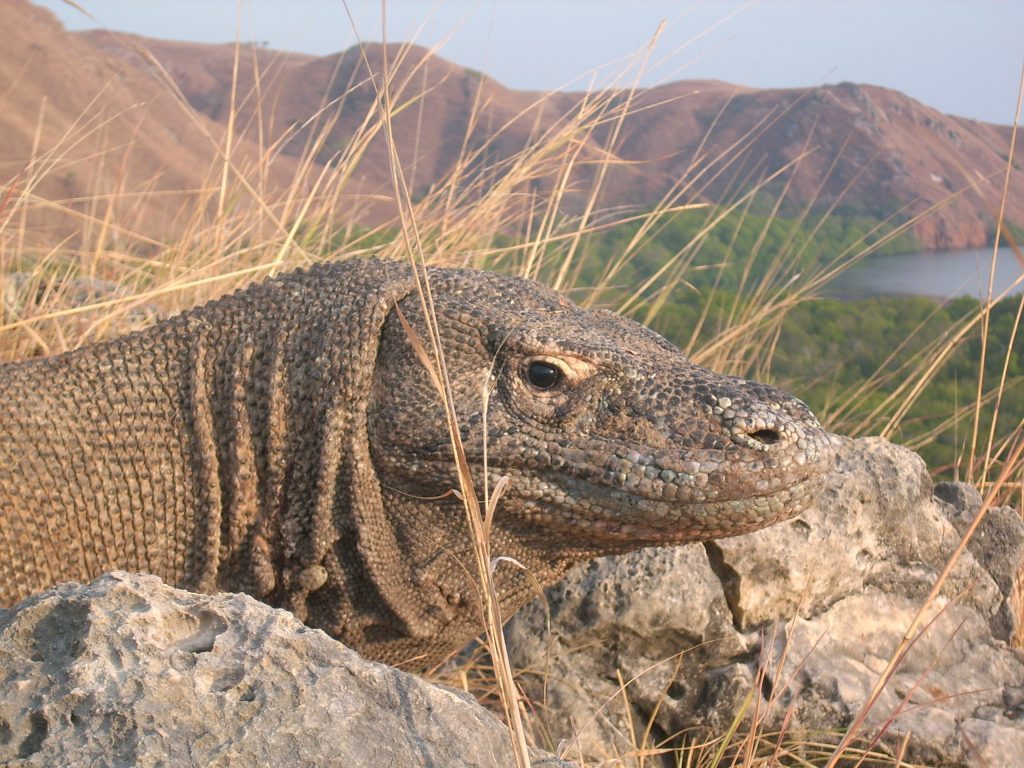An interview with Professor Bryan Fry, a biochemist, molecular biologist and Komodo dragon expert
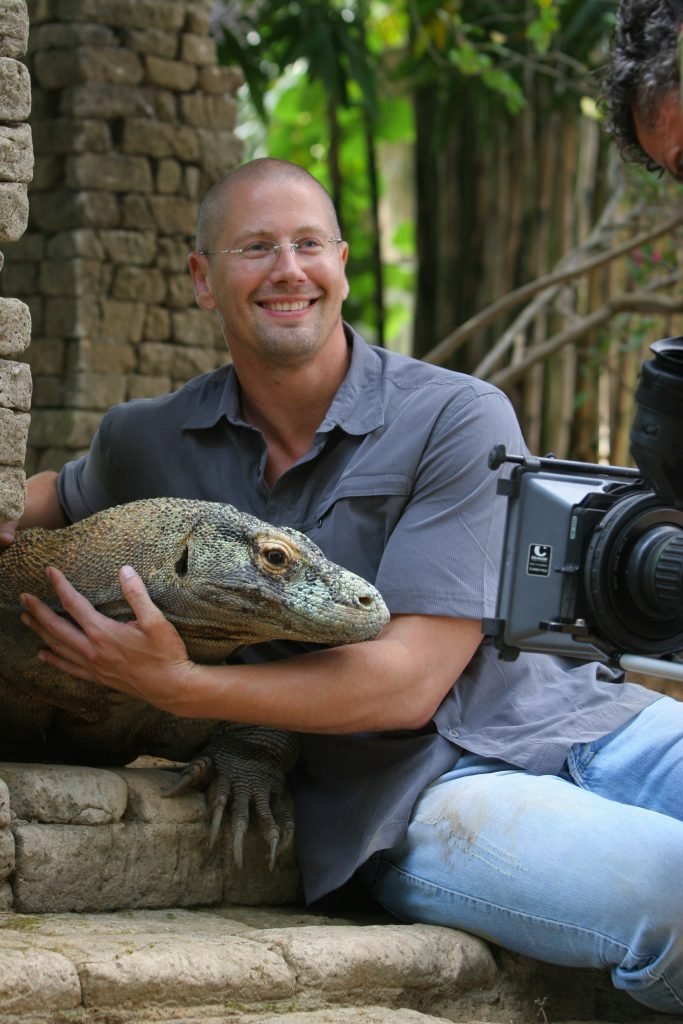
Professor Bryan Fry’s reason for relocating to Australia from the USA is perhaps not the most common. Instead of the lure of the country’s enticing waters and beachside cocktails, it was the number of venomous creatures that can be found in Australia that made it Fry’s personal paradise. “Australia is a truly lucky country in that it is the only country that has more venomous species of snake than non-venomous, by about a 2:1 or 3:1 ratio,” Fry says.
Now working at the University of Queensland as an associate professor at the School of Biological Sciences, Fry spends his days researching the effects of natural toxins, such as venoms, on the human body and in particular the formation of blood clots, a process known as the coagulation cascade.
One venomous creature that he is particularly interested in is the Komodo dragon, a large monitor lizard that can only be found on five islands in the world, all of which are located in southeastern Indonesia: Komodo, Rinca, Gili Montang, Gili Dasami and Flores. These islands, which boast lush savanna grassland, hilly landscapes and dense forest, are the natural habitat of the largest living lizards on planet Earth, which can grow to be over 3 metres in length and typically weigh over 70 kilograms.
Dr Bryan Fry took time out of his schedule to speak to New7Wonders correspondent Melita Cameron-Wood about his fascination with Komodo Dragons.
First of all, where do Komodo dragons originate from?
Fry: Komodos evolved not in Indonesia, but in Australia. They are not the biggest to have roamed, either — there were at least two larger Varanids (a group of carnivorous and frugivorous [fruit-eating] lizards). The second largest radiated to Timor while the Komodo dragon radiated to Flores and nearby islands.
The modern-day situation is that the Komodos have three mammalian potential prey choices, all of which are feral. The pigs and deer that have been introduced are within the natural prey size (40-50 kilograms), while the buffalo are dramatically larger than Komodo dragons, making it hard for Komodos to kill them.
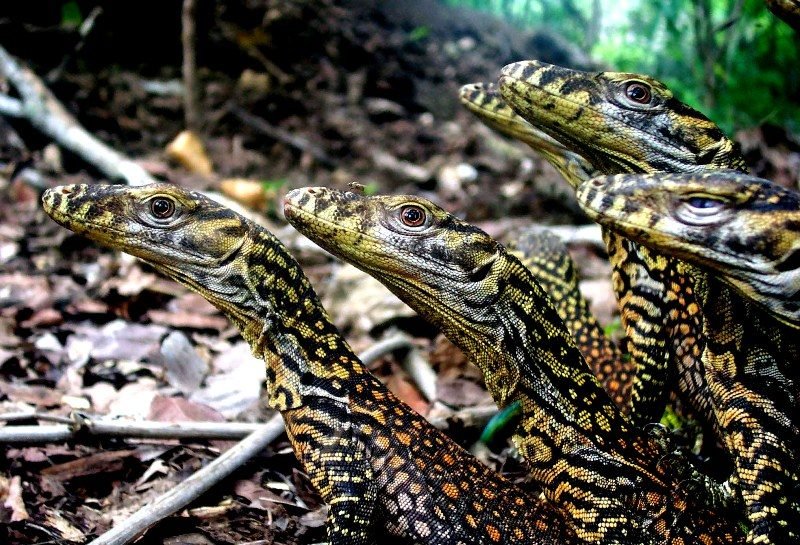
How long do Komodos typically live for?
Fry: We estimate that Komodos live to 80 to 100 years old. Therefore, it’s estimated that Megalania (an extinct species of an even larger monitor lizard) would have lived to 150 or perhaps even 250 years, which means they would have been even smarter than a Komodo. Just like a Komodo is much smarter than smaller monitor lizards, as you go down in size, they become progressively more like guided missiles.
How did your interest in venomous creatures first come about?
Fry: That’s a two-fold one. My very first memory is actually of being strapped to a hospital bed in absolute agony. That was due to spinal meningitis, which I came down with as a toddler. That’s a diagnosis that even now still strikes fear in parents’ hearts. Of the survivors, it’s very common to have a severe permanent injury. So in my case, I ended up with permanent deafness in my right ear and absolutely shattered balance, which is probably not the best thing for fieldwork. The whole experience of having spinal meningitis left me with this sense of the magic of toxins, where this invisible force strikes and then your life is on a completely different trajectory.

Then, as a child, I used to look at my mum’s photo albums. She was the daughter of UN diplomats from Norway, so she grew up bouncing over the globe. She lived in Africa a couple of times, and I saw her pictures of these fascinating animals, like cobras, Gaboon vipers and black mambas. I just fell in love with them. So, combined with my early formative experience with toxins and the fact that I thought venomous snakes were just absolutely awesome, it was clearly meant to be that I would study venomous animals for a living.
In fact, I was four years old when I grandly announced that I would study venomous snakes when I grew up. And somehow I have managed to turn that childhood passion into a career.
What does your research involving Komodo dragon venom involve?
Fry: We have found some very interesting lead compounds in Komodo dragon venom that are very potent droppers of blood pressure, which is a really important find. We have drugs to treat high blood pressure, but there is no one type of hypertension, just like there is no one type of pain and no one type of cancer. These are just broad descriptions rather than a discreet condition. There are a million different ways you can produce high blood pressure, just like there are equally diverse ways that we can cause pain to our body, all of which will respond differently to different treatments.
Similarly, with blood clotting disorders, these are caused by a myriad of different factors. So different stroke-busting drugs are more or less efficient depending on how the stroke is caused. So we have isolated very potent anticoagulants out of Komodo dragon venom and related monitor lizards, so these are all very unique compounds that are quite unlike anything that has been studied.
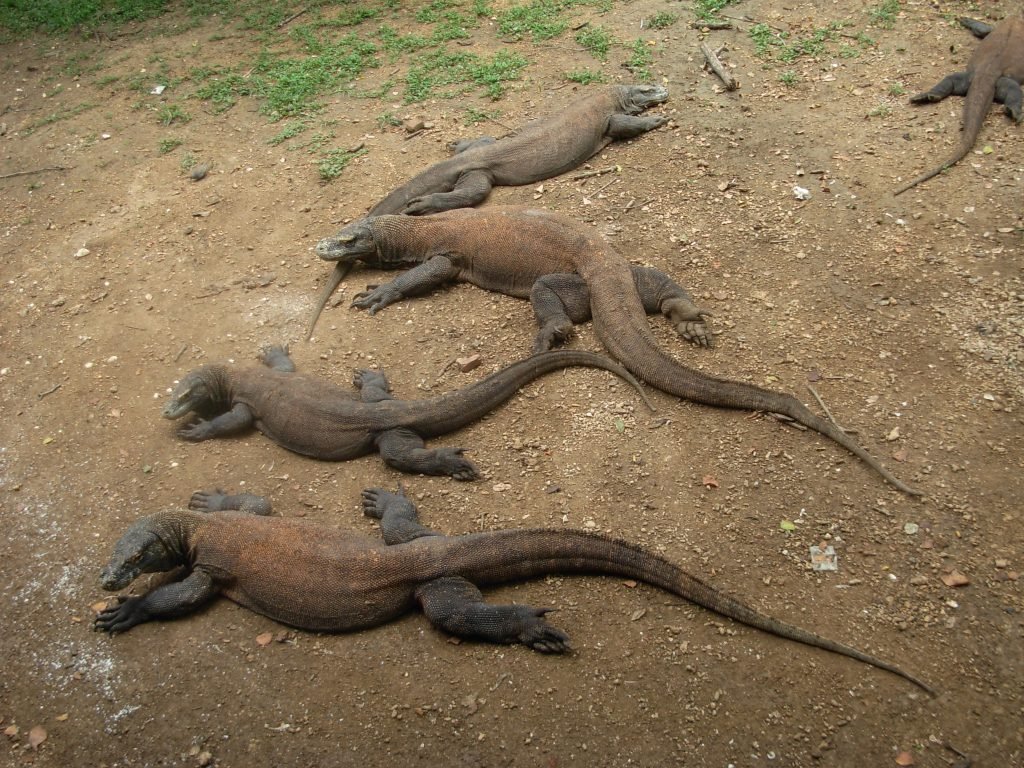
Whether or not they will ultimately become drug leads is not yet clear, as the research is still in its infancy, but we’re starting with something that is very unusual. If you want to find a new compound for use as a starting substrate for the development of new therapeutic, you’re not likely to find it from something like the European viper in the UK countryside because that’s ground that has been intensively raked for a very long time. Instead, you’re more likely to find it from something that has only recently started to be studied, like the Komodo dragon. Everything is low-hanging fruit. We’re talking about something that’s been on its own evolutionary trajectory for tens of millions of years. To link a Komodo dragon up to a European viper, you’re talking over a hundred million years of divergence. So you know, that’s an extraordinarily vast period of time, which is amplified even more so by the fact that venom evolves at an accelerated rate.
Komodo dragons are an endangered species. What is the strongest argument for the conservation of the natural world in your opinion?
Fry: When people ask me what the strongest message for conservation is, then I always say that your weakest message is an emotional one. If you talk about how awesome it is to go scuba diving in healthy parts of the Great Barrier Reef or to go hiking in intact parts of the Amazonian rainforest, these are sentiments I wholeheartedly agree with, but you’re preaching to the choir.
You’re not going to convert anybody who doesn’t already think that way. Instead, you need to have a conservation-through-commercialisation angle that emphasises that these animals are worth more alive than dead. Their habitat is worth more alive than dead. It is a bio-bank.
I mean, let’s take a look at venoms as an example. Venoms have had a very rich history. If you know of anybody taking high blood pressure medication, the odds are that they are taking Captopril or one of its derivatives. So that was actually developed from a snake venom over 45 years ago, but it remains today a market that makes 10 billion dollars a year. It is one of the top-20 drugs of all time. It’s up there with aspirin in regards to its economic and social and medical importance. The importance of Captopril cannot be overstated, and it’s a perfect example of why we need to conserve all of nature.
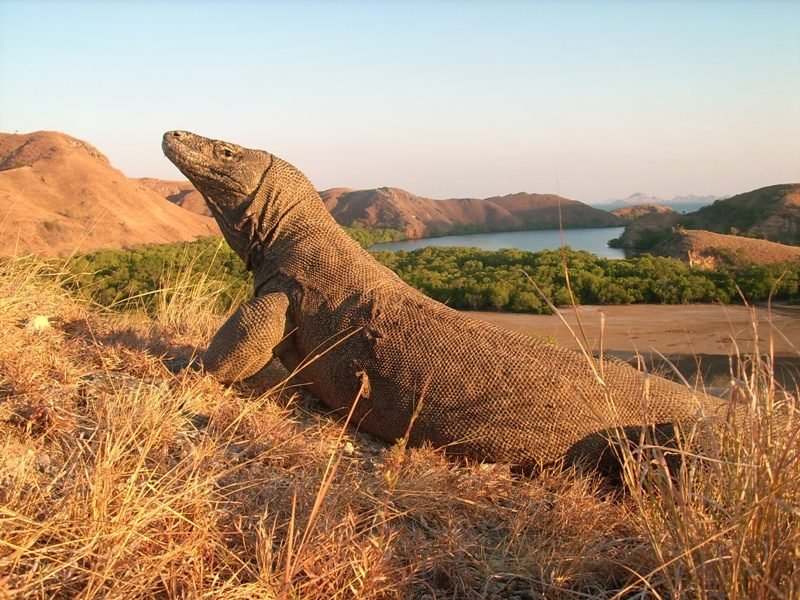
What should be avoided to prevent the extinction of the Komodo dragon?
Fry: If, for example, there’s of lot of tourism in the wrong areas, then that can disturb the Komodos. That could also disturb their breeding, or it could disturb their prey, which reduces the hunting effectiveness of the Komodo. Or if people extract a lot of ground water during the dry season, then that can severely disturb the entire ecosystem, which can have a knock-on effect because there are fewer Komodos in the wild than there are pandas. They are a very, very rare animal that can only be found on a few small islands. Hunting on the islands also reduces the amount of deer that are available for the Komodo to eat. And that’s going to decrease their numbers, too. It’s one of these things where one particular action may not be enough, but a multitude of actions together will lead to an amplification effect.
Then there’s the matter of feeding the Komodos. The rangers used to feed the Komodos by chopping up dead goats and hanging chunks of them out. Well, when they stopped doing that, there was a bunch of Komodo Dragons that had become so used to this that they stopped hunting. So they just hung around the ranger ranger station, starved and ended up dying. That is a good example of the danger of feeding wildlife. You shift the natural behaviour. So it was good thing that they stopped feeding them. This was about 15 years ago. It was a bad look to have starving Komodos, but the alternative was to go back to feeding them and that was its own problem. It’s always the animal that ends up paying the price for people’s arrogance. So yet again, it’s about all about striking the right balance. And that just requires communication, just like anything else.
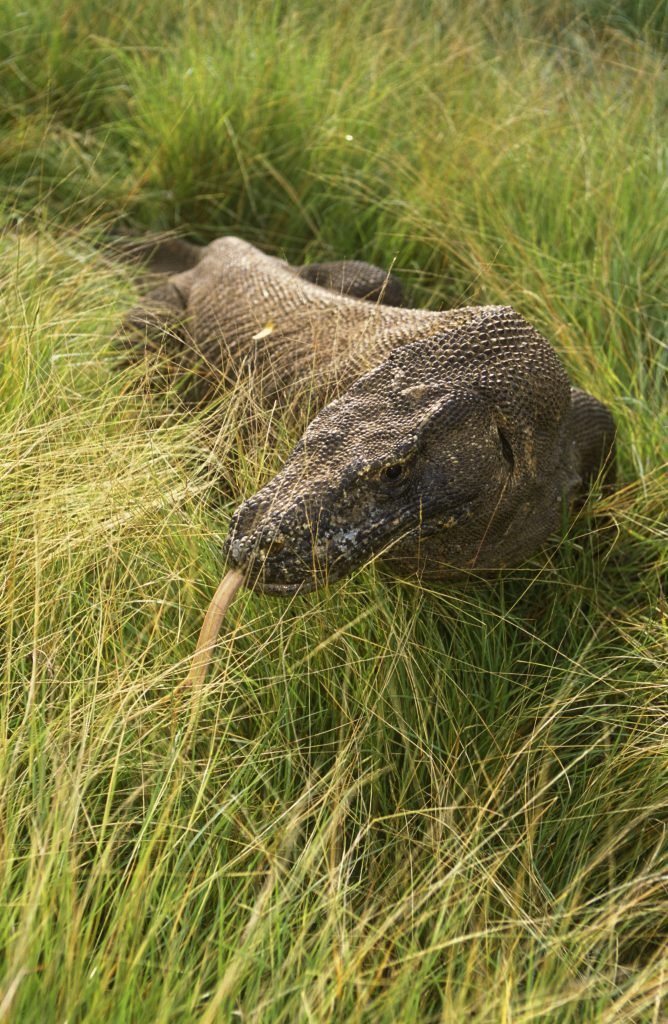
What is fieldwork with Komodo dragons like?
Fry: It is so much fun. It is my favourite fieldwork. My top three fieldwork experiences were with Komodo dragons, king cobras and anacondas. I actually went snorkelling with anacondas. These are a very close top three, but the Komodo dragons just pipped the other ones. BBC Natural World did a special on me, and my work on Komodos was at the heart of it. There’s a bit where I’m sitting a few metres away from a big male Komodo. He’s about three metres long. This is a big animal. He’s just pretending that he is not even interested in me and acting as if he’s asleep. But we have this great scene where I closed my eyes, and then you see him slowly start to open his. And then I would open mine, and he would close his. Then I’d close mine again, and he would open his. The cameramen zoomed in, and you could see that the Komodo was actually squinting. He wasn’t closing all the way, and that shows an awareness of self. That shows that he knows his position in time and space.
My daughter, who is a toddler, doesn’t have that level of sentience. When she closes her eyes, we cease to exist. The Komodo was cognisant of what was going on around him. Whenever you look at them, there is something going on. It is this kind of alien intelligence, but they are ridiculously smart. The fact that it was able to cheat with the squinting was just mind-blowing. It makes you think what were the bigger ones like that are now extinct?
Komodos are dangerous creatures. How do rangers protect tourists from Komodo dragons?
Fry: There’s two aspects to this. One is they recognise the Komodos’ behaviour and kind of push them off with very long sticks that sort of look like toothpicks. But then, the other part of it is that the Komodos around the tourist area get very habituated to the tourists. But then, if you go to another part of the island, they are completely different beasts.
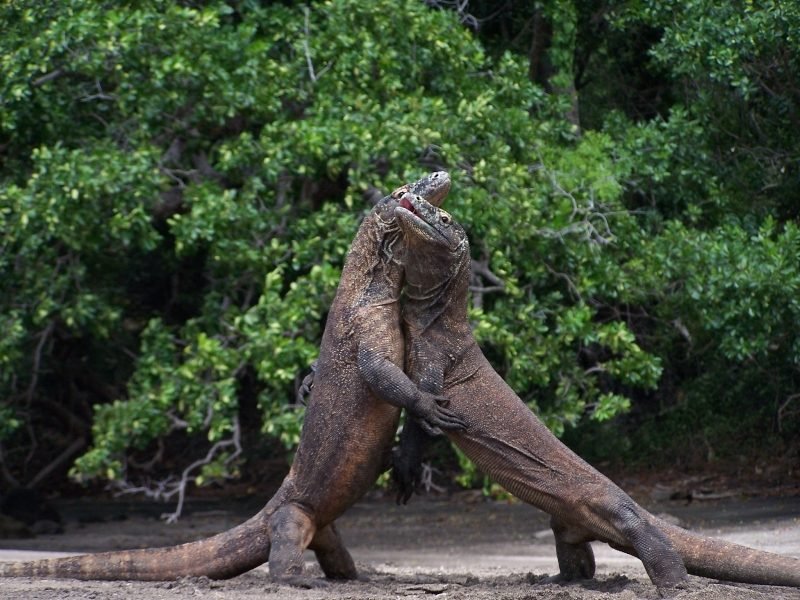
What do you mean by “completely different beasts”?
Fry: We were filming one time on a very remote part of Rinca that nobody ever goes to, and the Komodos there were wild. They had completely different behaviour to the ones around the tourist area, which just lie on the ground watching the people go by. The ones in the remote area had a go at us. One of them actually got a hold of one of our Indonesian helpers and took about half a kilogram of meat out of the back of his leg. One of the cameramen had to scoop him up in his arms, run to the end of the little dock and jump into the boat, while the rest of us went into the surf to get away from the Komodos. There were about five of them that came after us. Something like that would be very unlikely to happen around the ranger station because they are so accustomed to people being there.
And finally, if you had to give me two short fun facts about Komodo dragons, what would they be?
Firstly, the entire idea that Komodo dragons use toxic bacteria as a weapon is a myth. In fact, they actually use venom as a weapon. And secondly, they have serrated teeth like a shark. They’ve got big serrations on both the front and the back edge of each tooth, so it cuts like a steak knife and is very, very efficient.
***
Although an encounter with these creatures might sound like a hair-raising experience, they are without a doubt a true wonder of the natural world. Komodo, one of the New 7 Wonders of Nature, is lucky enough to be home to these majestic, otherworldly beasts.

